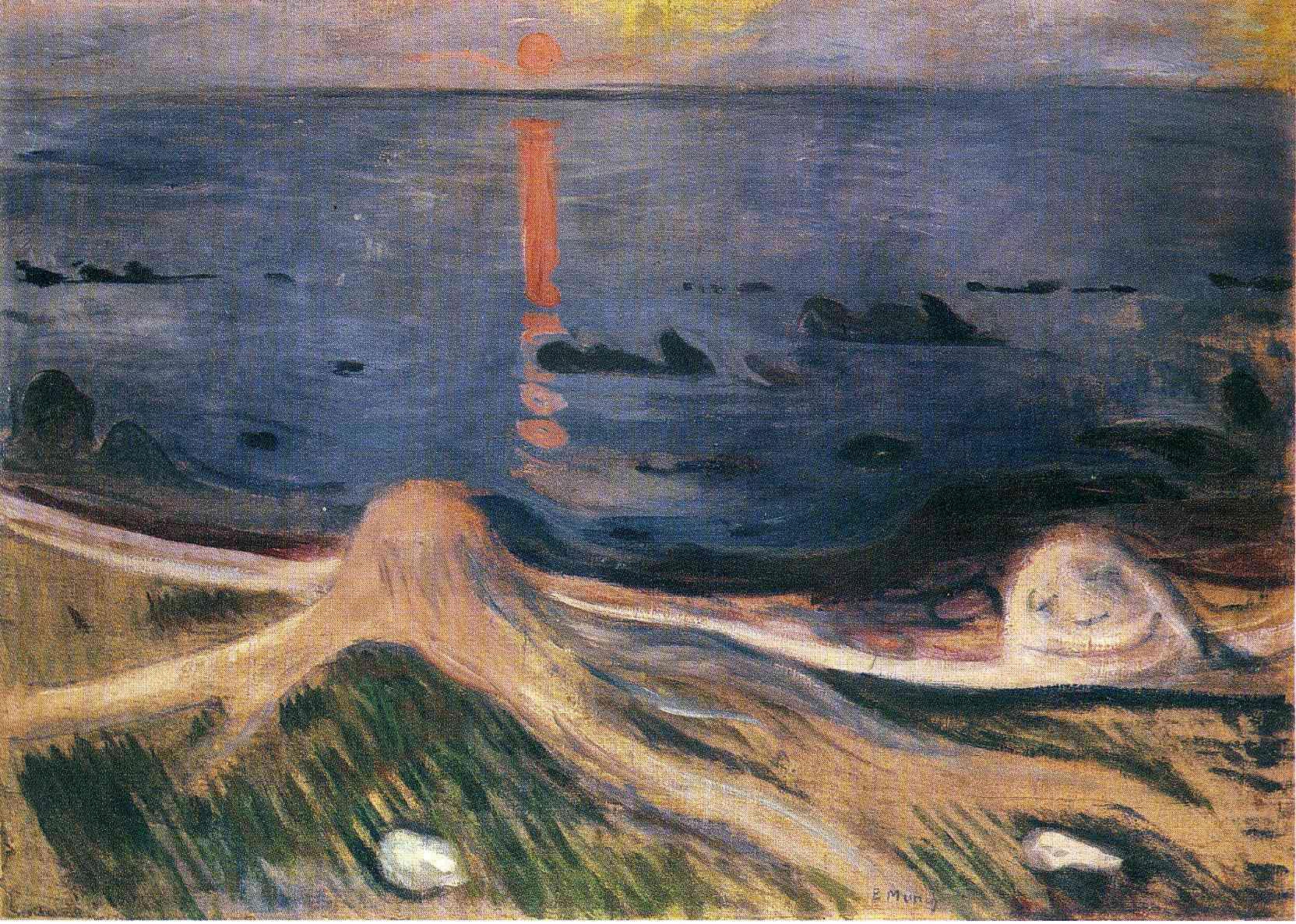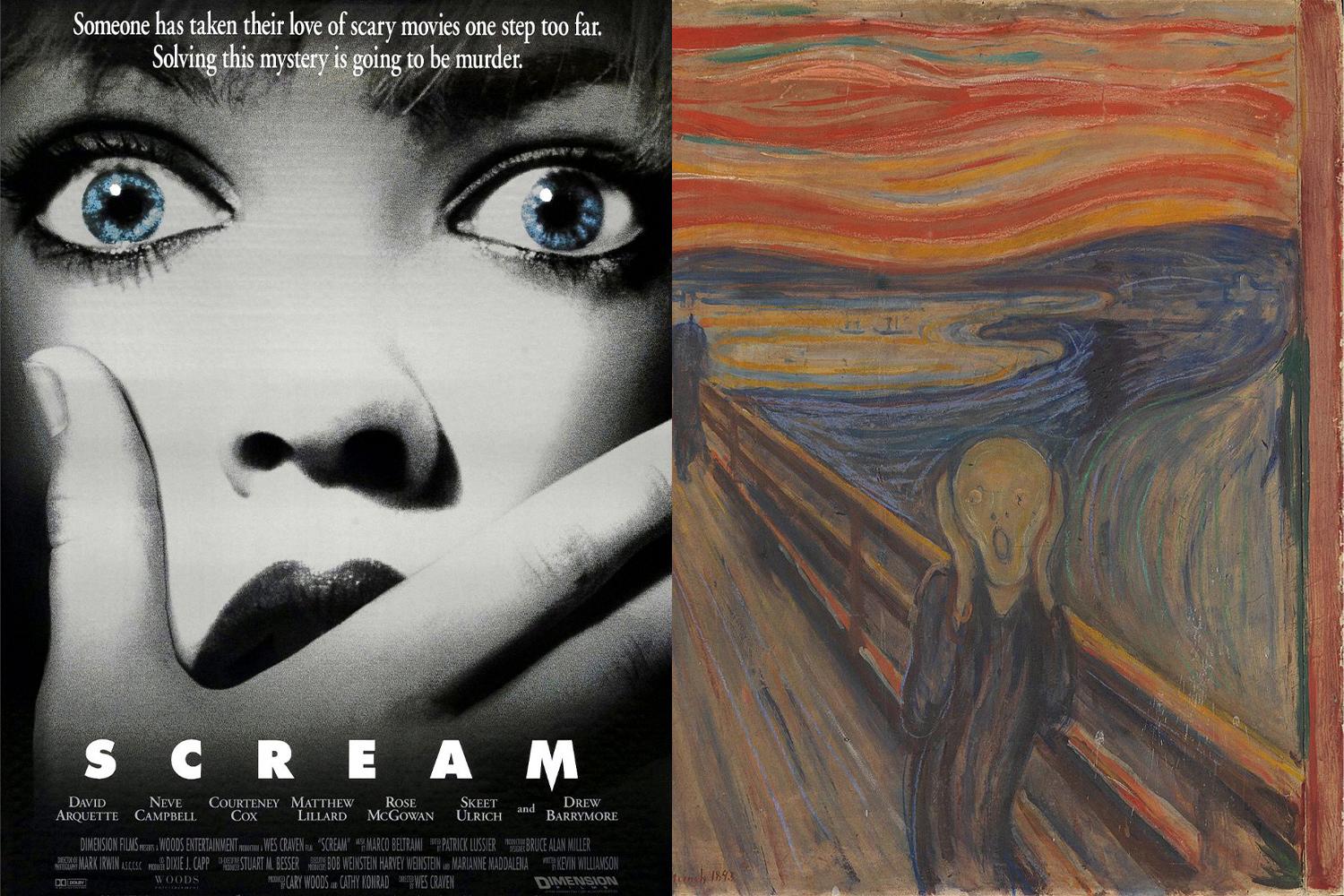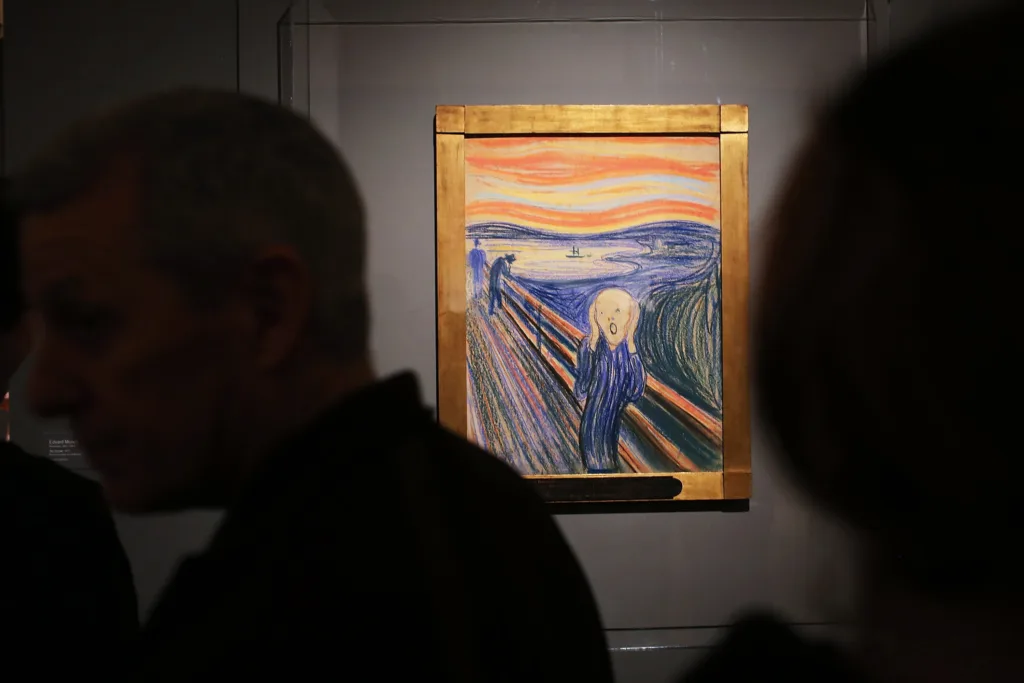Edvard Munch’s enigmatic painting, The Scream, has captivated viewers since its first appearance in 1893. The striking and unsettling image of a figure writhing in despair with a bright orange sky behind them has become an iconic symbol of modern art. But what many people don’t know is that the painting carries a mysterious message written by Munch himself: “Kan kun være malet af en gal Mand!” (“Can only have been painted by a madman!”)
Recent infrared scans at Norway’s National Museum have confirmed that this enigmatic phrase was indeed written by the artist himself. But what did Munch mean when he wrote this? Was it simply an ironic statement about his own work, or did it carry deeper meaning?
Many experts suggest that Munch’s note was more than just an ironic comment. They believe it was a reflection of his inner state of mind at the time. The painting itself is seen as an expression of Munch’s emotional struggle and vulnerability, so it makes sense that he would want to express this furher in such a personal way. In addition, his use of vibrant colors and stylized imagery is believed to represent his own mental anguish and turmoil.
The phrase “Can only have been painted by a madman” could be seen as a metaphor for the intensity and power of emotion that drove him to create the painting in the first place. In other words, it could be argued that Munch was acknowledging that his creative process was driven by something beyond conscious control – something wild and untamed.
Ultimately, we can never know for sure why Edvard Munch wrote this enigmatic phrase on one of his most famous works of art. But one thing is certain: its presence gives us insight into the mind and creative process of one of history’s greatest painters – and serves as a reminder to us all that creative genius does not always come from rationality or logic!
The Possibility of a Madman Painting
Munch’s note that “The Scream” must have been painted by a “madman” was an ironic comment that expressed his disregard for the conventions of society. According to art historian Marit Guleng, Munch was conveying his own vulnerability and inner turmoil in this statement, as well as affirming his identity as a rebellious artist who does not abide by society’s rules. In other words, by labeling himself a “madman”, Munch was asserting the validity of his own artistic expression and rejecting any external judgement or criticism of it.

Source: biblioklept.org
The Madman Painter: A Look Into the Life of an Eccentric Artist
Edvard Munch (1863-1944) was a Norwegian Expressionist painter and printmaker who is widely considered to have been a madman. His most famous painting, The Scream, has become an iconic symbol of human anguish and despair. Munch’s work often explored the turbulent emotions of life and expressed human suffering through intense colors and distorted forms. He was deeply influenced by his psychoanalytic experiences and shocked the art world with his depictions of mental anguish. This sense of psychological turmoil became increasingly apparent in his later works, which are characterized by heavy use of symbolism and raw emotion.
Can Only Have Been Painted By A Madman: A Look at the Famous Painting
The words “Can only have been painted by a madman!” can be found on the famous painting The Scream, created by Norwegian artist Edvard Munch in 1893. This expressionistic painting is one of the most iconic and recognizable images in art history. It depicts a figure with hands covering its face, standing on a bridge and screaming against a backdrop of an orange sky. Infrared images recently confirmed that Munch himself added this note to the painting. The Scream has become an icon of modern art, embodying emotional turmoil and universal anxiety.
The Notoriety of The Scream Painting
The Scream is one of the most iconic and renowned works of art in the world. Created by Norwegian artist Edvard Munch in 1893, The Scream has become a symbol of modern art and a representation of intense emotional states. It is widely considered to be a masterpiece due to its bold and innovative use of color, powerful symbolism, and expressionistic style.
The painting depicts an anguished figure standing on a bridge, with a bright red sky in the background. The vivid colors create an atmosphere of extreme anxiety and anguish, which captures the emotional state of the figure. This dynamic composition has become extremely popular amongst viewers who can relate to the feelings depicted in the painting.
Furthermore, its influence extends beyond just visual appeal; it has been used as an inspiration for numerous films, books and othr pieces of media over the years. This has helped to popularize The Scream as an iconic work of art that crosses cultures and generations. In 2012, one version was even sold at auction for $119.92 million! It is clear why this painting continues to be so famous today: its timelessness, power and emotion make it a true masterpiece.
Symbolic Meaning of the Madman
The madman in the parable symbolizes the idea of a free-thinking individual, unburdened by the constraints of traditional morality and societal norms. He is a representation of Nietzsche’s own philosophy, which rejects many of the conventions that society holds dear – particularly those related to religion and morality. The madman is not afraid to challenge accepted beliefs and conventional wisdom, even if it means being labeled as “mad” by others. He is also a symbol of Nietzsche’s concept of the ‘Übermensch’ – an individual who transcends traditional human limitations and achieves greatness throgh his/her own power, creativity and will. In short, the madman symbolizes Nietzsche’s philosophy of self-empowerment and freedom from conventionality.

Source: arts.ac.uk
The Madness of Vincent Van Gogh
Vincent van Gogh was an artist who lived in the late 19th century. During his lifetime, he experienced mental health issues, including bouts of depression and anxiety, which caused him to be admitted to a psychiatric hospital several times. His condition was further exacerbated by his use of absinthe and other substances. Due to his severe mental illness and its effects on his behavior, he became widely known as the “Redheaded Madman”.
Van Gogh often acted erratically and unpredictably due to his mental health issues, which included hallucinations and delusions. He was known for impulsively cutting off part of his ear during an episode of psychosis in 1888. He also self-mutilated on multiple occasions, leading many people to believe that he was insane. Additionally, he had difficulty in forming relationships with others and often felt isolated from society.
Due to thee factors, Van Gogh earned the nickname “The Redheaded Madman” as a reference to his red hair and mental instability. Although this moniker has been used in a derogatory manner in the past, it is important to remember that Van Gogh’s mental illness should not be seen as a source of ridicule or shame. Rather, it can serve as an important reminder of how serious mental health conditions can be, even for those with immense talent like Van Gogh.
Interpreting the Inscription on ‘The Scream’
The mysterious inscription in the top right hand corner of the original 1893 painting of The Scream reads, “Can only have been painted by a madman”. This statement has puzzled art historians for over a century, as its meaning and origin remain unknown. Some theories suggest that it was added as part of a joke by an unknown admirer, while others believe it may have been written by the artist himself, Edvard Munch, as a comment on his own mental state at the time. Whatever the truth is, it remains one of art history’s greatest mysteries.
The Mystery of the Creepy Painter
The “Bloody Painter” is a fictional serial killer character from a three-part creepypasta story. The story follows an artist named Helen Otis, who is known as the “Bloody Painter” due to her habit of using her own blood in her paintings. She is described as having a twisted, sadistic view of art and she has been responsible for many gruesome murders throughout her life. She often targets people that she deems are not worthy of living, such as thse with mental illnesses and people who have wronged her in some way. She also has a tendency to paint scenes from the murders that she commits, using her own blood in the process. Her victims are usually left mutilated and disfigured, sometimes with their organs removed or placed on display. Despite all this, Helen is still somewhat sympathetic character as there is evidence to suggest that she may have been abused during her childhood which could explain why she turned out the way she did.
The Controversial Artwork of Pablo Picasso
Pablo Picasso’s most controversial painting is Les Demoiselles d’Avignon, created in 1907. The painting depicts five nude women in a brothel-like setting and is considered to be the first major work of Cubism. The painting was extremely shocking for the time, and stirred up debate among critics and oher artists alike. It featured elements that had never been seen before in art, such as abstracted forms, flat surface planes, and multiple perspectives. Matisse was one of the many artists who were taken aback by the painting’s radical composition and revolutionary style. Picasso’s Les Demoiselles d’Avignon is widely regarded as one of the most influential works of modern art, and its controversy has helped make it an iconic masterpiece.
Vincent Van Gogh’s Painting Created During Psychosis
The only painting known to have been painted by Vincent van Gogh while suffering from psychosis is his Self-Portrait (1889). This self-portrait, which is currently in the collection of Norway’s national museum, was painted during a period of severe mental illness when he was living in Saint-Rémy-de-Provence. The exact date of the painting is unknown, but it has been suggested that it was created shortly before or after his hospitalization at the asylum there in May 1889. After decades of debate and doubt, the authenticity of this work has now been confirmed by experts. It stands out as an exceptional example of Van Gogh’s willingness to confront the darkness within himslf and portray his inner turmoil through art.
Exploring the Significance of the Red Sky in Edvard Munch’s The Scream
The sky in The Scream painting is red due to a combination of factors. Firstly, the artist, Edvard Munch, was likely inspired by a volcanic sunset he observed after the Krakatau eruption in 1883. This event caused intense sunsets with deep red and orange hues that may have influenced his choice of color for the sky in The Scream.
Secondly, Munch may have been inspired by sightings of stratospheric nacreous clouds. These clouds form at unusually high altitudes and can cause the sky to appear bright red or orange.
Finally, it is possible that the red sky was an expression from Munch of a scream from nature itself. He may have used the color to reflect an emotional state of discomfort or distress and as a way to convey emotions about natural events that were beyond his control.

The Number of Times The Scream Has Been Stolen
The Scream, painted by Norwegian expressionist Edvard Munch in 1893, is one of the most iconic images in modern art. There are four versions of this painting, two of which have been stolen in major museum heists. The first theft occurred in 1994, when two men broke into the National Gallery in Oslo and stole both the original version of The Scream as well as Munch’s Madonna. They were recovered two years later.
In 2004, another version of The Scream was stolen from a museum in Oslo during a daring daylight robbery. It was found after three months.
In total, The Scream has been stolen twice – once in 1994 and once in 2004 – from two diffeent museums. Both thefts made international headlines and are considered among the most famous art heists in history.
Conclusion
The phrase “Can only have been painted by a madman” written on Edvard Munch’s painting The Scream is a testament to the artist’s revolutionary and unique approach to creating art. By using vibrant and unrealistic colors, he was able to create a turning point between the symbolist and expressionist movements. This phrase also reveals his vulnerability and fear at the time, which no doubt contributed to the painting’s success. Although it is uncertain why Munch wrote this sentence in the first place, it serves as an important reminder of how art can be used to express feelings of anxiety, depression and even madness. In any case, it is clear that The Scream is one of the most iconic works of art in history and will forevr remain an important part of the history of art.
